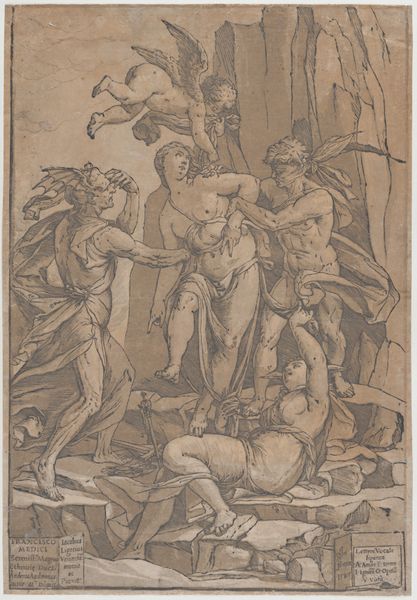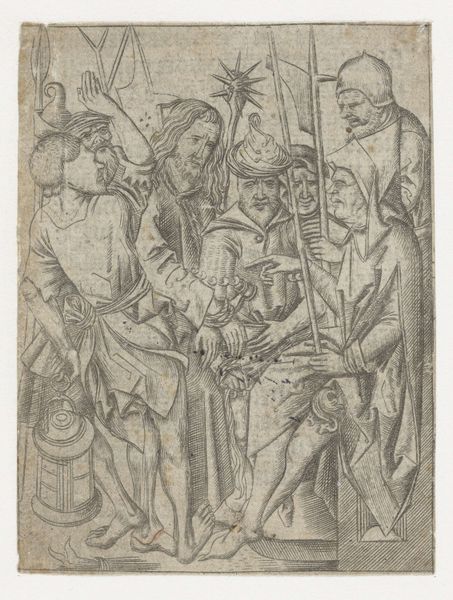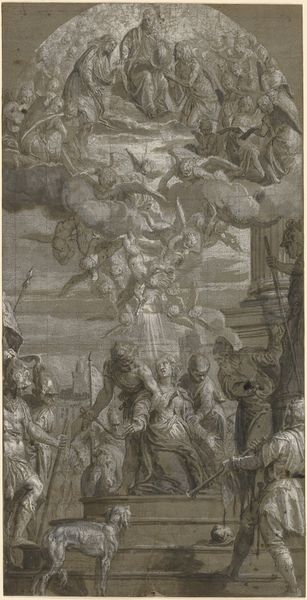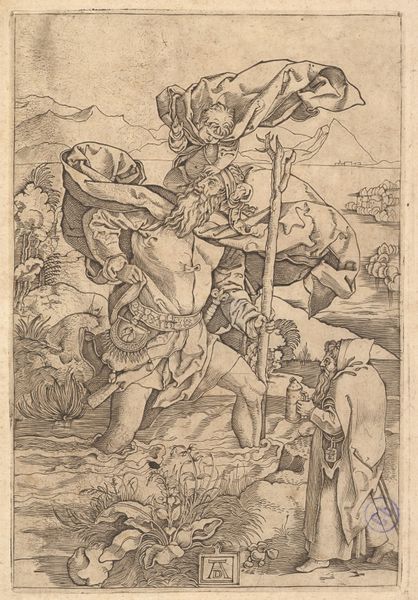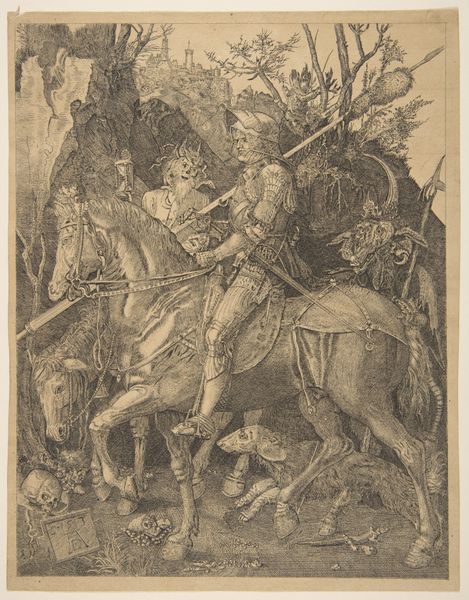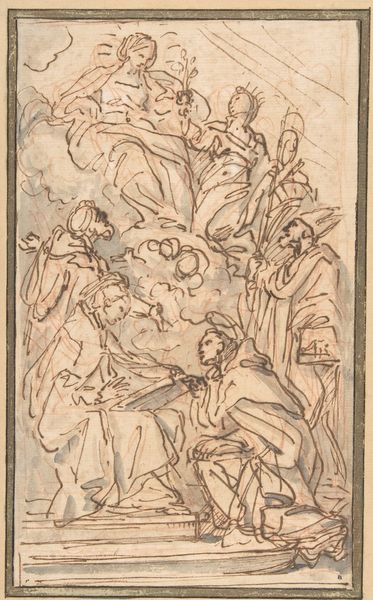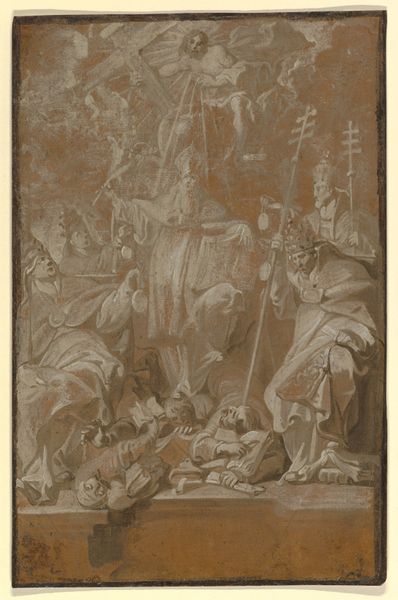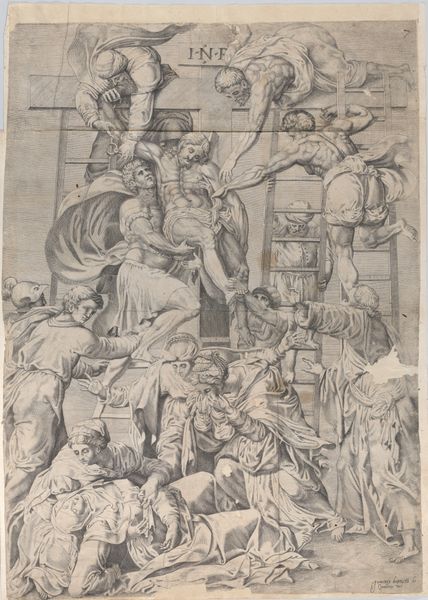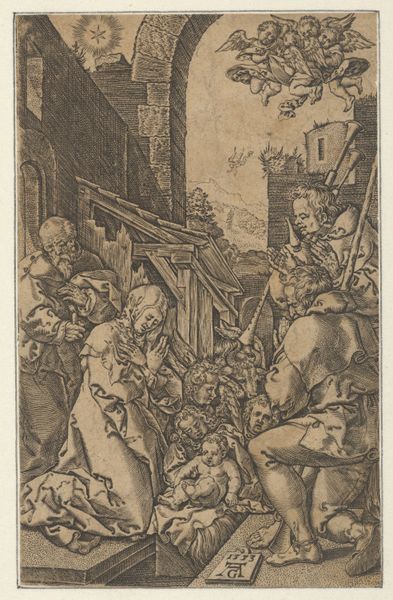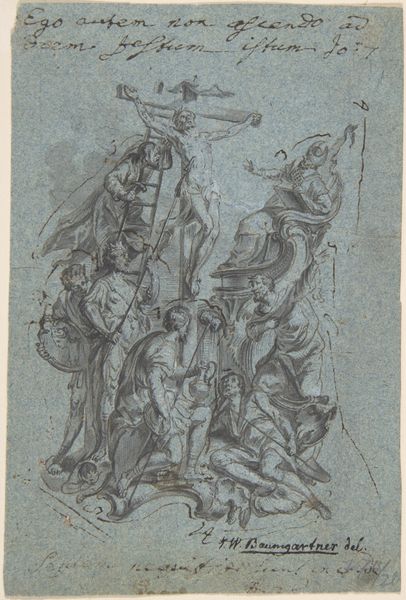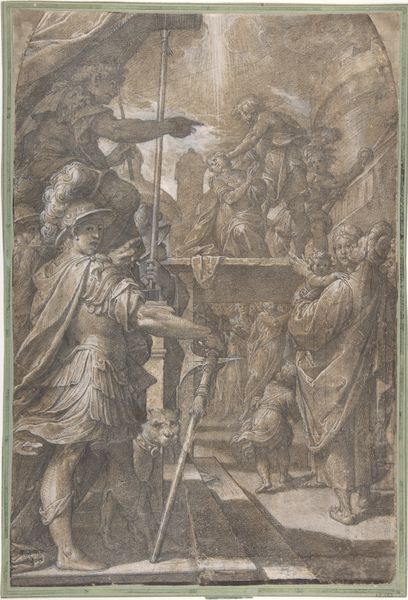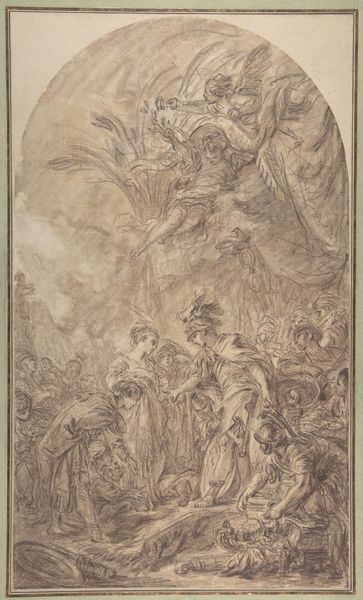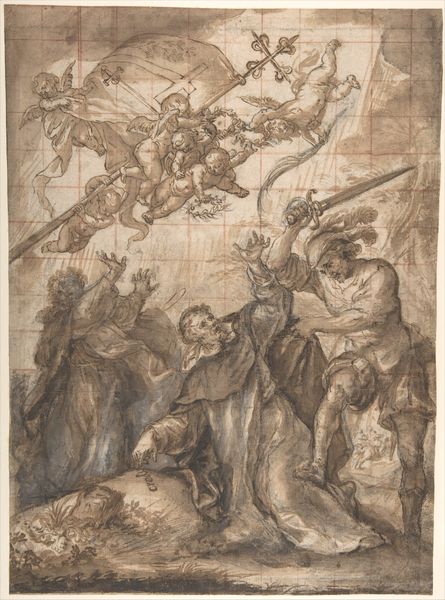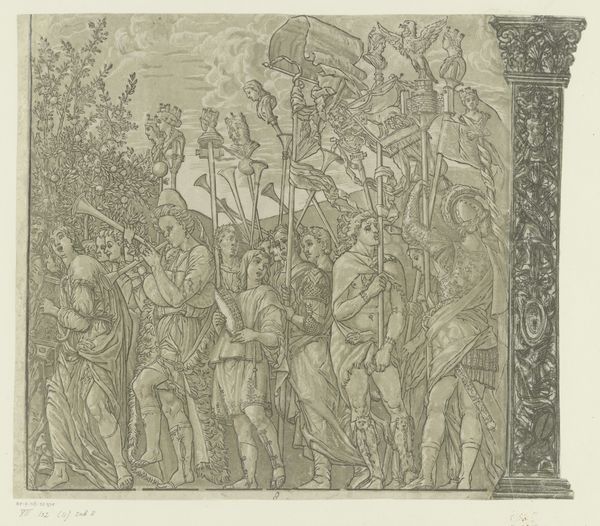
drawing, print, charcoal
#
drawing
# print
#
charcoal drawing
#
figuration
#
11_renaissance
#
oil painting
#
female-nude
#
men
#
watercolour illustration
#
charcoal
#
history-painting
#
italian-renaissance
#
male-nude
#
christ
Dimensions: Sheet: 14 1/2 × 10 5/8 in. (36.8 × 27 cm)
Copyright: Public Domain
Curator: Luca Penni’s “Christ in Limbo,” dating from the mid-16th century, presents us with a dramatic interpretation of Christ's descent into hell. It resides here at the Metropolitan Museum. Editor: My first impression is one of immense dynamism; Christ appears as a beacon of light and hope cutting through what looks like a suffocating sepia wash. Curator: Indeed, Penni masterfully employs charcoal and perhaps some printmaking techniques here. The restricted palette enhances the dramatic tenebrism. Notice how the cultural obsession of the time of muscular anatomy and idealized human forms blend with religious fervor, designed to influence society at the time. Editor: Absolutely. The materiality speaks volumes. The earthy tones – created by charcoal – give this infernal setting a grounded, almost tangible quality. You can almost feel the desperation in those reaching hands, contrasting against the clean lines around Christ himself. Curator: Considering its creation, it’s worth pondering its place within the history of religious imagery. What did it signify in an era marked by reform and artistic patronage? This depiction serves as a powerful example of the Renaissance's engagement with its inherited theological and pictorial traditions. Editor: I'm fascinated by the repetitive process in printmaking, especially when viewed in conjunction with the emotional depth achieved here. There's almost an ironic commentary about using mechanized reproduction techniques to illustrate ideas on the holy. Did the rise of print culture help propel a singular vision of Christ or invite criticism in its consumption and interpretation of religious figures? Curator: The question of reproducibility is so important in thinking about public perception of religious stories through history. While an oil painting remained only accessible to the highest classes, images reproduced to a wider population carried ideological influences into far broader socio-economic demographics. Editor: This really makes one reconsider the concept of fine art in its production and role to inspire or dictate ideology. Curator: Agreed. It seems Luca Penni had some intriguing questions he poses here. Editor: Yes, questions that resonate even today through the power of its materials and image.
Comments
No comments
Be the first to comment and join the conversation on the ultimate creative platform.
